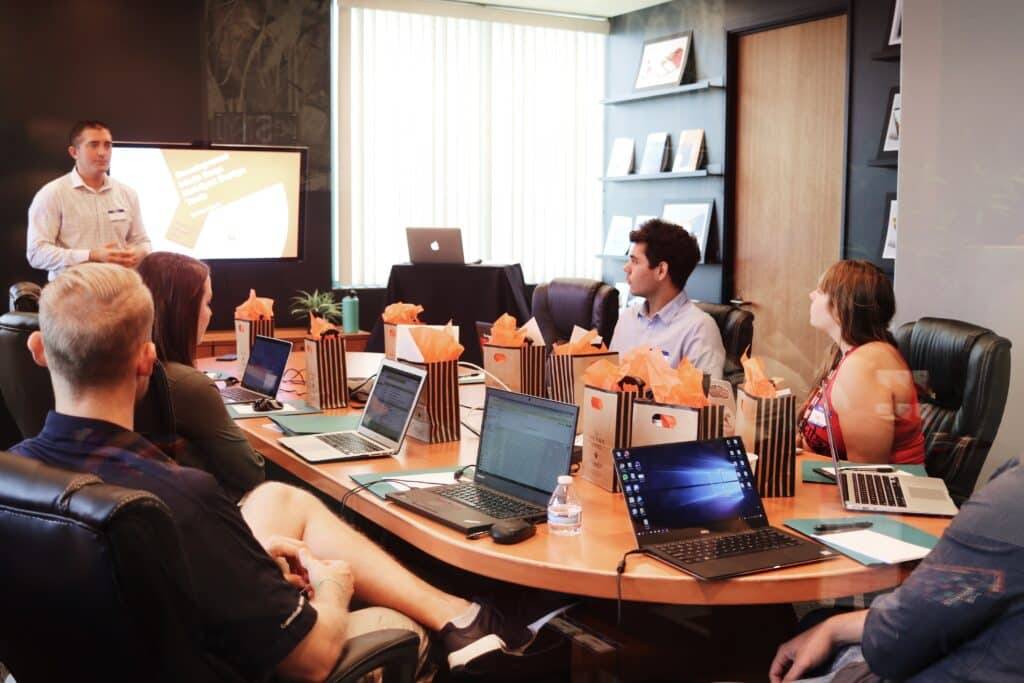In today’s ever-changing business climate, sales professionals must adapt to the times and modernize their sales strategies in order to stay competitive.
The art of sales has evolved dramatically since technology became the driving force in how we build products, go to market and manage our sales processes. I wonder if Salesforce founders Marc Benioff et al really understood the scale of the revolution they were beckoning as they built A World-Class Internet Company for Sales Force Automation in their Hawaiian shirts back in 1999. It’s hard to imagine that at the start of that decade, the fax machine was seen as bleeding-edge technology.
The past few years have seen further shifts in the approach to how we sell, again driven by technology as the pandemic took its grip on the world. Almost overnight, we shifted from in-person selling to virtual sales and an anytime/anywhere work environment. The way we sold had to change, and the capabilities of today’s sales tech stack made it possible to engage with buyers in new and exciting ways.
A new era
Customers now demand faster response times and more personalized experiences than ever before, which means that salespeople need to adopt modern tools and methodologies in order to remain relevant. Automation, AI, and other new technologies can help streamline the process by reducing manual tasks and freeing up time for more strategic activities. Additionally, these tools allow for better data collection and analysis, which can lead to more informed decisions about target audiences and product offerings. There’s no dispute that technology has driven sales capability to sell faster and to more people. But even with ongoing advancements in software, automation and AI, selling can still be a hard slog.
Buyer expectations and behaviors have changed, which means sales teams have to shift their approach to be successful. At the end of the day, people buy from people and ensuring sales reps have the necessary skills and processes to support them is just as important as the tech stack lurking behind the scenes.
In today’s ever-changing business climate, sales professionals must adapt to the times and modernize their processes in order to stay competitive. Back in February, Qwilr teamed up with Mixmax to discuss Modern sales techniques for the modern buyer. Here are 6 areas I discussed with my good friend and colleague, Kyle Parish, VP of Sales, for salespeople to build on to modernize their approach and improve success rates.
1. Personalization and relevance at scale
The days of sending a million emails to a million prospects from your CRM, and hoping something sticks, are over. If your prospect doesn’t see the relevance in the first moments of outreach, they won’t engage. Personalization is key. A report on buyer behaviour in 2022 shows buyers spend 45% of their time on independent research into possible solutions, so if you’re a good market fit they’ll likely already know about your offering before you reach out.
Trust is a growing commodity between buyers and sellers and your prospects need to see that you take a consultative approach to understanding their problems and care about solving them. Adopting methods that enable you to personalize your sales content to make it highly relevant to your buyer during outreach, will go a long way to establishing trust early on in the sales cycle. One approach is to develop USPs by industry, that can be used to target multiple organizations with similar problems as a way to build relevance at scale. But personalization is still needed to really address the unique challenges that your buyer and their organization feel are relevant to them.
(Sound words of advice from Kyle: NEVER let your prospecting outreach get stale.)
2. SDR and AE collaboration
Having Sales Development Representatives (SDRs, or commonly known as inside sales) and Account Executives (AEs) working closely together on territories has long been seen as a best practice in sales teams (for organizations lucky enough to have the headcount!) and a way to build a pipeline of fresh AE talent. When both roles work together seamlessly, it creates a sales organization where everyone is invested in achieving common goals — resulting in increased efficiency and improved outcomes overall.
Building true collaboration with ongoing mentorship, incentivized deals and constant feedback on what works/doesn’t work will ensure both the AE and SDR are set up for success. When working a specific deal, the SDR collects valuable information from their interactions to use in personalization, and that can be leveraged in decision-maker conversations by the AE.
3. Adapting to the times and being creative
Adapting to the times means recognizing that there are situations beyond your control that will impact your ability to sell. By staying ahead of the curve and adapting quickly to changing customer needs, companies can ensure that their offerings remain attractive and competitive in an ever-evolving market. In challenging times, for example, finding your niche and positioning your solution as a ‘switch and save’ option for your buyer, may provide inroads to organizations you haven’t had access to before.
Remember that different companies have different goals. Explore markets that have a higher propensity to buy, understand what they care about and establish yourself as a trusted partner to their business through the many channels available (see our recommendations for utilizing LinkedIn during social selling).
And it pays to be prepared. Anticipate some of the barriers to success as you’re working a deal. Find out what the CFO cares about and make sure you address that. Think creatively when it comes to the logistics of deal terms, payments etc. Anticipating blockers in advance will help you to make it as easy as possible for your buyer to buy.
4. Quantification vs qualification
When it comes to prospecting leads for new sales, there is an important distinction between qualification and quantification. Qualified leads are those who have expressed interest in your product/service by taking some kind of action, and fit your ideal customer profile (ICP).
Quantification is about understanding if your product or service can help your prospect save time and money by eliminating major issues and blockers for them. You can determine that by finding out why the customer wants to talk to you and quantify the problem that they have. Ask what brought them here. What are their needs? Understand their business metrics and sell to your use case. If you can’t, do both of you a favor and qualify them out.
When times are hard, it can be tempting to build pipeline regardless of whether you can meet their needs. Quantification can be a crutch, but qualification is crucial. Don’t be afraid to qualify out so you can focus your efforts where it matters.
5. Text messaging
When communicating with prospects, we recommend salespeople view text messaging as a useful tool in the sales process, but a bad idea when prospecting. No matter how commonplace texting is these days, an unsolicited text to a prospect feels too intrusive, too personal. Basically, it’s spam.
BUT when used well, texting to keep in touch during the sales process can help drive the deal forward and increase the feeling of trust and rapport between the seller and champion. Our recommendation is always to ask permission before contacting a prospect by text, as a courtesy. Be mindful that different cultures have different views during the buying process if you’re selling internationally.
6. Selling behind the scenes to buyers
These days, it's unlikely that you’ll find yourself face-to-face IRL or even via video call with every member of the buying committee. So salespeople must consider how to make the decision-making process as easy as possible for those behind the scenes. Understanding exactly who is involved - IT, security, procurement, finance, management - and who poses the biggest challenge, is key. By this stage, the sales rep should deeply understand the business drivers and share highly relevant information to make the purchasing decision a no-brainer for everyone involved.
One thing we see that works with Qwilr, is embedding a recording of a demo into the Qwilr page (using tools like Gong or Chorus), so that the buying committee can quickly understand the value to the business. The demo can use the insights uncovered by SDR and AE collaboration to ensure that the content shared is highly personalized and relevant, with the outcomes that matter to the buyer committee.
Qwilr makes it easy to create differentiated, compelling sales material that responds to the needs of each unique customer by combining content, interactive pricing, ROI calculators and more, in a single mobile-friendly webpage, that can be easily shared and sold. While the buyer shares their personalized proposal with the rest of the buyer committee, you can track their behavior through analytics and identify the optimal time to re-engage.
Evolving and modernizing your sales process is essential for staying competitive in today's dynamic markets. But technology can’t do it all. The process and people are just as important to ensure your sales experience delivers the best possible revenue results, and engages your customers well into the future.
For more great insights into modern selling please watch the full webinar: Modern Sales Techniques for the Modern Buyer
About the author

Mark Tanner|CEO & Co-founder
Mark Tanner is the Co-founder and CEO @ Qwilr.
Qwilr is the way to create your proposals (and other sales and marketing collateral) as beautiful, intelligent and interactive webpages. And because they're on the web we can give you incredible analytics about who is viewing your proposals, what they care about, and whether or not they're likely to buy.


